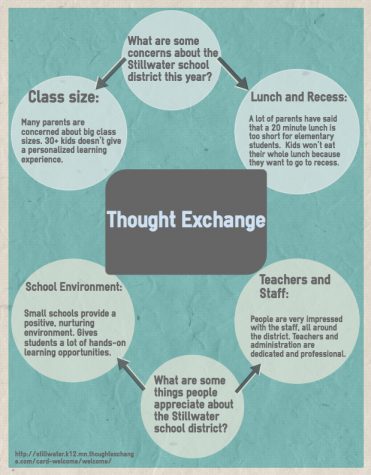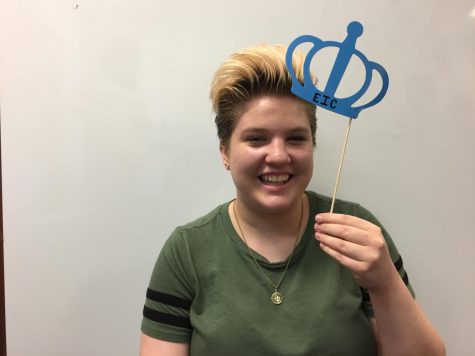Thought Exchange results show district strengths, concerns
February 15, 2017

Powered by Thought Exchange, the Stillwater School District created the Join the Conversation engagement process to allow students, families, community and district members to get involved in voicing their thoughts and opinions on the various elementary, junior and high schools in the district. Throughout the months of Oct. and Nov., 3,451 people submitted one or more comments relating to topics such as classes, teachers and the school environment.
Every person who submitted responses let administration know what the most significant benefits and problems the district community has; 73.5 percent of participants were parents of Stillwater students.
Teachers were the most appreciated part of the district. The cumulative number of votes this topic received was 6,216 out of a total of over 175 thousand votes.
“I appreciate the dedication and determination of some very hard working teachers in the building,” a commenter wrote.
Other popular topics included “the high quality of the music program,” and “the variety of activities and clubs to be involved in.” The district community submitted more comments on what they enjoyed about the district and schools than they did on topics that must be improved.
The majority of concerns were centered around the high school. Many people discussed how big class sizes are and how it is particularly disadvantageous for both the students and teachers to have 35 students in one classroom.
“A better student to teacher ratio is essential to learning,” another commenter wrote.
The final question asked was about additional thoughts participants might have on any subjects. These mostly related to the expensive parking passes for licensed students. It was said the price of $220 was much too overpriced for average high school students who need the responsibility of driving themselves.
“I am shocked at the fee charged to park at the high school. I am also shocked that with a lot that is paid, it is so disorganized and poorly planned. Kids walk across nearby streets, the parking lot, down the middle of roadways, and everywhere and it is nearly impossible to even drive into the lot,” a commenter wrote.
The Thought Exchange process allows participants to choose topics that they find need to be discussed and examined by the district administration and after making comments on those, they are allowed to place stars next to comments that they agreed with. Roger Stippel, a social studies teacher at SAHS, politely disagrees with how the process is handled.
“You should have a scientific way to know that the information truly and accurately represents way people feel. When I was talking about measuring public opinion [in class] I said its really hard to accurately measure and I was using the Thought Exchange as a good example,” Stippel said.
Carissa Keister of the district’s Communications Office, that attends to relations between the community and the schools, gave some insight on what the district will decide what to do with the collected information.
“We believe the information gathered in our first Thought Exchange process was very beneficial. More than 3,400 people from across the district took part and together they shared more than 7,000 ideas about our schools. All of the information we’ve gathered has been shared with school board members, district administrators, school principals, and the staff at each of our schools. Staff at each building have reviewed the ideas specific to their schools and are seeking ways to address the concerns raised by members of the school community,” Keister said.
The Communications Office and district had already taken some action after reading people’s thoughts. They had discussed class and lunch sizes with teachers and principals and how to fit various classes into schedules. They also talked about creating a healthier menu for lunches. The Office has also created advisory committees to meet with students, families and community members.
“Many other things are in the planning stages. For example, food service has plans to enhance its school lunch and breakfast options and principals are talking about ways to provide more time for students to eat lunch,” Keister said.
Whether or not the Thought Exchange process is a sufficient way to collect data for the district, it allowed many people to emphasize their thoughts on where they or their students attend school.
“We’re planning to do another Thought Exchange process this spring to gather more feedback from the community. Watch for more about that to be shared in the coming months,” Keister said.







